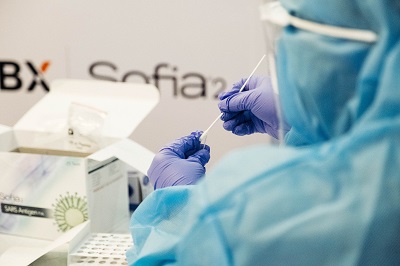The registration of D-class medical devices in Vietnam is a highly regulated and thorough process, given the potential risks associated with high-risk medical devices. D-class devices typically include implantable devices, life-sustaining devices, and other high-risk medical products.
Here's a detailed breakdown of the process and steps for D-class medical device registration with the Vietnam Ministry of Health (MOH):
Step-by-Step Process for D-Class Medical Device Registration with Vietnam MOH
1. Confirm Device Classification
- Classification of the device: Ensure that your device qualifies as a D-class device under the Vietnamese medical device classification system, which is based on risk assessment.
- D-class devices are high-risk and may include implantable devices, life-sustaining equipment, or devices used in critical or high-risk medical procedures.
- If you're uncertain about the classification, it’s advisable to consult with a local regulatory expert.
2. Appoint a Local Authorized Representative
- Authorized Representative: Foreign manufacturers must designate a local representative in Vietnam who will be responsible for handling the registration process and communicating with the Ministry of Health.
- This representative can be an individual or a company that has knowledge of Vietnam's regulatory framework.
3. Prepare Required Documentation
The following documents need to be prepared for submission to the Medical Device Administration (MDA) of the Vietnam MOH:
- Registration Application Form: This form is provided by the Ministry of Health and must be completed and submitted.
- Product Technical Dossier: A detailed dossier that includes the following:
- Product Description: Details of the device, including its intended use, mechanism of action, and any relevant technical specifications.
- Manufacturing Process and Quality Control: Information about the manufacturing process, quality control measures, and compliance with international standards like ISO 13485.
- Risk Analysis: A detailed risk assessment based on ISO 14971 (Risk Management for Medical Devices).
- Clinical Data/Trials (if applicable): Evidence of the safety and efficacy of the device, which may include clinical trial data or post-market clinical follow-up.
- Labeling and Instructions for Use (IFU): These should be in Vietnamese or bilingual (Vietnamese and English). Labels must meet Vietnam’s regulatory requirements.
- Certificate of Free Sale (CFS): This certificate, issued by the regulatory authority in the country of origin, shows that the device is legally sold and marketed in the country of manufacture.
- Good Manufacturing Practice (GMP) Certificate: Proof that the manufacturing facility complies with GMP standards.
- Quality Management System (QMS) Certification: ISO 13485 or equivalent certification.
- Declaration of Conformity: A document stating that the device complies with applicable international standards.
- Risk Management and Safety Data: Evidence that the device has been evaluated for potential risks and how those risks are mitigated.
4. Submit the Dossier to Vietnam MOH
- Submission: The completed dossier, including the application form and supporting documents, should be submitted to the Medical Device Administration (MDA) under the Vietnam Ministry of Health.
- The submission is usually done by the appointed local representative or the importer.
5. Review and Evaluation by the MOH
- Review Process: The MOH will evaluate the dossier to ensure that it meets the requirements for safety, performance, and compliance with Vietnam's medical device regulations.
- The review may include:
- Examination of the technical documentation.
- Assessment of clinical data or trial results.
- Inspection of the manufacturing facility and verification of GMP certification.
- If the device is considered high-risk, the review process may take longer compared to lower-class devices.
- Additional Requests: The MOH may ask for additional information or clarification during the evaluation process. This could include further data on the safety of the device, manufacturing practices, or post-market surveillance.
6. Registration Approval
- Issuance of Registration Certificate: If the MOH is satisfied with the documentation and the evaluation, it will issue a Medical Device Registration Certificate for the device. This allows the device to be marketed and sold in Vietnam.
- The registration certificate will typically be valid for 5 years, after which it must be renewed.
7. Post-Market Surveillance and Compliance
- Post-Market Obligations: Manufacturers and importers are required to comply with post-market surveillance regulations, which include:
- Monitoring the safety and performance of the device once it's in use.
- Reporting any adverse events or product defects to the MOH.
- Ensuring that the device complies with ongoing regulatory requirements.
- Periodic Audits and Inspections: The MOH may conduct inspections of the manufacturing facility or conduct random audits of the registered device in the market.
8. Renewal of Registration
- The registration for D-class devices is valid for 5 years from the date of issuance. Before the expiration date, a renewal application must be submitted, including updated documentation such as:
- Product updates (if any).
- Post-market surveillance data.
- Any changes in the manufacturing process or quality systems.
Important Notes
- Clinical Trial Data: If required, clinical trial data should be submitted to demonstrate the safety and efficacy of the device.
- Compliance with International Standards: Compliance with standards such as ISO 13485 and IEC 60601 is critical for ensuring the device’s quality and performance.
- Local Translation: Ensure that product labeling, instructions for use (IFU), and other critical documents are either in Vietnamese or bilingual (Vietnamese and English).
Conclusion
The process of registering a D-class medical device with the Vietnam Ministry of Health is thorough and requires compliance with strict regulatory standards. By following the above steps and working with a local authorized representative, manufacturers can ensure a smooth registration process and access to the Vietnamese market.

Contact Us:
Whatsapp or Wechat:+86 15816864648;email address:hito.lin@grzan.cn
.png)
.jpg)



